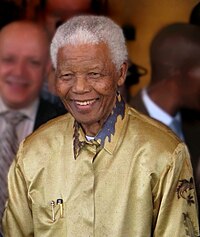Katame-waza,
grappling techniques, is also essential in judo and is often seen in judo
games. These techniques are very high level and risky. Grappling techniques are
classified by three techniques. These are osaekomi-waza; holding or pinning
techniques, shime-waza; strangulation techniques, kansetsu-waza; joint
techniques. Osaekomi-waza has seven kinds of techniques; katagatame,
kesagatame, kuzure-kesagatame, kamishihogatame, kuzure-kamishihogatame,
tateshihokatame, yokoshihokatame. In these techniques, “katame” or “gatame”
means locking. Major osaekomi-waza are kesagatame, kamishihogatame,
tateshihokatame, yokoshihoukatame. In case of kesagatame, one can suppress the
opponent by closing his waist to the opponent’s side and opening his body,
pinching the opponent’s arm deeply by one arm, holding the opponents neck,
griping the opponent’s collar. This kesagatame is also used in wrestling.
 |
| kesagatame |
In case of tateshihokatame, one can suppress the opponent by straddling the opponent’s middle and closing one’s chest to the opponent. At this time, the opponent lies on his back. One must control opponent’s neck or shoulder with one’s arm and opponent’s both legs with one’s legs.
In case of yokoshihokatame, one can suppress the opponent by carrying one’s arm from the opponent’s side to the opponent’s neck and locking the opponent’s neck, then holding the opponent’s leg with the other arm and riding on the opponent and closing one’s chest. At this time, the opponent also lies on his back. The more one lower his waist, the easier one can control the opponent’s movement. I think this technique is the most effective in osaekomi-waza.
In case of katagatame, one can suppress the opponent by locking opponent's neck and arm which is raised upward with one's both arms. One must close his head on the opponent in order to control the opponent's movement. This osaekomi-waza is one of the most difficult techniques in judo.
One can get ippon if one suppresses the opponent for more than 25seconds by using these osaekomi-waza. (Getting ippon means winning) One can get wazaari if one suppresses the opponent for 20~25 seconds. (Getting wazaari twice means winning One can get yuko if one suppresses the opponent for 15~20 seconds. (If one get yuko, the chance one wins by judgment increases) If the opponent says "give in way" or signals while one suppress the opponent, one win regardless the time.
reference; Wikipedia ja.wikipedia.org/wiki/柔道
